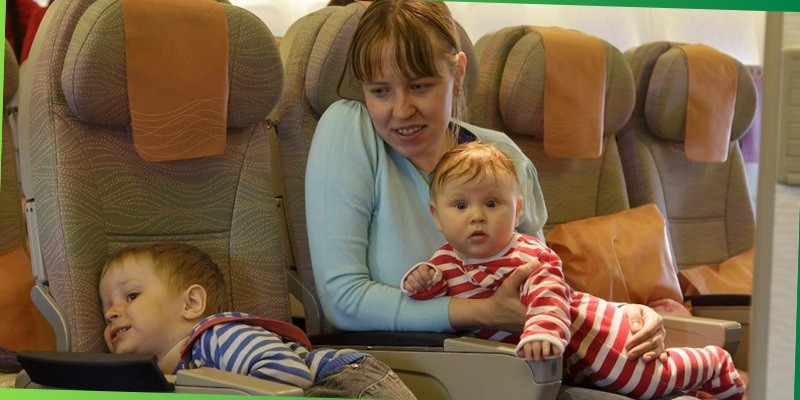Last Updated on January 15, 2025
No, you cannot surrender your child to the state easily. It must be determined that this choice is in the best interest of everyone involved.
The Options Available For Parents
When faced with the difficult decision of not being able to care for your child, it’s important to understand the options available to you. While surrendering your child to the state is typically not an option, there are other alternatives that you can consider. This article will delve into three potential options for parents: Temporary Guardianship, Adoption by a Family Member or Friend, and Adoption Through an Agency.
Temporary Guardianship
If you find yourself in a temporary situation where you are unable to care for your child, you may consider temporary guardianship. This offers a short-term solution by entrusting the care of your child to a trusted family member or friend. Temporary guardianship provides stability and support for your child, while also ensuring that you can regain custody once you are ready to do so.
Adoption By A Family Member Or Friend
Another option to consider is adoption by a family member or friend. If you have someone close to you who is willing and able to provide a permanent and loving home for your child, this can be a viable solution. Adopting your child within your existing support network can give you peace of mind, knowing that your child will be cared for by someone you trust.
Adoption Through An Agency
Lastly, adoption through an agency is another alternative for parents who are unable to care for their child. This option involves placing your child with a licensed adoption agency, which will then work to find a suitable and loving adoptive family. Adoption agencies provide support, guidance, and legal assistance throughout the process, ensuring that your child is placed in a safe and nurturing environment.
While surrendering your child to the state is not usually an option, it’s important to explore the alternatives available to you. Temporary guardianship, adoption by a family member or friend, and adoption through an agency are all viable solutions that can provide your child with the care and love they deserve. It’s crucial to carefully consider each option and choose the one that best aligns with your circumstances and the best interest of your child.
Dealing With Parenting Challenges
Dealing with parenting challenges can be overwhelming and it’s important to acknowledge that there are times when the responsibilities and demands of being a parent may become too much to handle. It’s natural to feel a sense of self-doubt and uncertainty during these moments, but it’s crucial to explore all available options and resources before considering surrendering your child to the state. In this article, we will discuss some strategies for coping with parenting challenges and provide guidance on accepting your limitations, setting boundaries, resetting your expectations, letting go of control, and seeking support and advice.
Accepting Your Limitations
As a parent, it’s important to recognize and accept your limitations. No one is perfect and it’s okay to admit that you may not be able to meet all of your child’s needs on your own. Accepting your limitations does not make you a bad parent; instead, it allows you to be realistic about what you can and cannot do. It’s important to prioritize your own mental and emotional well-being, as this will ultimately benefit your child. Remember to be kind to yourself and seek support from friends, family, or professionals when needed.
Setting Boundaries
Setting boundaries is essential for maintaining a healthy parent-child relationship. Boundaries help establish guidelines and limits that are necessary for both you and your child’s well-being. Clearly communicate your expectations and limitations, and enforce them consistently. This helps create a sense of stability and security for your child and ensures that you can meet their needs while maintaining your own well-being.
Resetting Your Expectations
As parents, we often place high expectations on ourselves and our children. However, it’s important to remember that every child is unique and develops at their own pace. Resetting your expectations means adjusting your mindset and understanding that your child’s growth and progress may not always align with societal or personal timelines. Embrace the individuality of your child and celebrate their achievements, no matter how small they may seem.
Letting Go Of Control
Letting go of control can be particularly challenging for parents, but it is necessary for both your well-being and your child’s development. Recognize that you cannot control every aspect of your child’s life and that they need space to make their own choices and learn from their experiences. Trust in the foundation you have provided and have faith in your child’s ability to navigate their own path.
Seeking Support And Advice
Parenting is a journey that is best navigated with the support and advice of others. Reach out to friends, family, or support groups who can provide guidance and reassurance. Surround yourself with a network of individuals who share similar experiences and can offer valuable insights. Additionally, consider professional help, such as therapy or counseling, which can provide you with tools and strategies to navigate parenting challenges.
Remember, surrendering your child to the state should be a last resort option, and it’s crucial to explore alternative solutions and support networks before considering this path. By accepting your limitations, setting boundaries, resetting your expectations, letting go of control, and seeking support and advice, you can overcome parenting challenges and provide a nurturing environment for your child’s growth and development.
Healing The Effects Of An Unloving Childhood
Living through an unloving childhood can leave deep emotional scars that continue to affect us well into adulthood. However, it is possible to heal from these wounds and create a more fulfilling life. In this section, we will explore various strategies for healing the effects of an unloving childhood, including therapy and counseling, self-care practices, reading self-help books, understanding and addressing triggers, and validating and healing the inner child. Let’s delve into these approaches below.
Therapy And Counseling
One of the most effective ways to heal from an unloving childhood is through therapy and counseling. Working with a licensed therapist who specializes in childhood trauma can provide valuable guidance and support as you navigate through your healing journey. Therapy sessions allow you to explore your past experiences, understand how they have impacted your present beliefs and behaviors, and develop healthier coping mechanisms. Furthermore, therapy can help you gain insight into your emotional needs, rebuild self-esteem, and develop stronger relationship skills.
Self-care Practices
Prioritizing self-care is crucial when healing from the effects of an unloving childhood. Self-care practices help you cultivate self-compassion, nurture your emotional well-being, and develop a sense of belonging and safety within yourself. Engaging in activities that bring you joy, such as practicing mindfulness, regular exercise, spending time in nature, or pursuing hobbies, can provide a positive outlet for self-expression and promote healing. Additionally, setting boundaries, saying no when necessary, and honoring your own needs are important aspects of self-care that allow you to prioritize your well-being.
Reading Self-help Books
Another valuable tool for healing is reading self-help books. There are numerous resources available that address childhood trauma, healing from emotional wounds, and developing a healthier mindset. By reading self-help books, you can gain new perspectives, learn coping strategies, and feel empowered on your healing journey. It can be comforting to know that you are not alone in your experiences and that others have successfully healed from similar challenges. Remember to choose books that resonate with you personally and focus on the areas you most need guidance in.
Addressing Triggers
Triggers are events, situations, or interactions that elicit strong emotional reactions due to their association with past traumatic experiences. By understanding your triggers, you can learn to manage them more effectively and prevent them from derailing your progress. Creating awareness around your triggers involves identifying the specific cues that evoke negative emotions and memories from your unloving childhood. Once identified, you can develop strategies for self-soothing, grounding techniques, or seeking support from a therapist or support group to address these triggers and reduce their impact on your daily life.
Validating And Healing Your Inner Child
Your inner child represents the wounded part of yourself that experienced the pain of an unloving childhood. Validating and healing your inner child is an integral component of the healing process. This involves acknowledging the emotions, needs, and experiences of your younger self and providing the love, compassion, and understanding that may have been absent during that time. Engaging in inner child healing exercises, such as journaling, visualization, or inner child therapy, can help nurture your inner child, build self-compassion, and foster a sense of self-worth.

Credit: www.usatoday.com
Frequently Asked Questions Of Can I Surrender My Child To The State?
What To Do If You Don’t Want Your Child Anymore?
If you don’t want your child anymore, consider temporary guardianship, adoption by a family member or friend, or adoption through an agency. Seek therapy, practice self-care, and understand your triggers for healing from the effects of an unloving childhood. Be honest with parents about not being able to watch their child anymore.
It’s important to note that voluntarily giving your child to the state is not typically an option, but there may be respite foster care available. Terminating parental rights requires legal processes and is not as simple as signing a form.
Overall, seek professional guidance and support.
What Do You Do When You Can’t Handle Your Child Anymore?
If you can’t handle your child anymore, consider temporary guardianship, adoption by a family member or through an agency. Accept your limitations, set boundaries, reset expectations, and let go of control. Seek support and check basics like sleep, diet, and exercise.
Therapy, self-care, and understanding triggers can help heal effects of an unloving childhood. Be honest and communicate your preference to spend time together rather than babysitting. However, voluntarily giving your child to the state is not typically an option.
How Do You Deal With An Unwanted Child?
If you are dealing with an unwanted child, here are some options to consider: temporary guardianship, adoption by a family member or friend, adoption through an agency, participating in therapy, practicing self-care, reading self-help books, understanding triggers, healing and validating your inner child.
Discuss your specific situation with professionals for guidance.
How Do You Tell A Parent You Can’t Watch Their Child Anymore?
Be honest and straightforward. Say, “I love your kids, but I would prefer to spend time with all of you together rather than babysit them. “
Can I Voluntarily Surrender My Child To The State?
No, you cannot voluntarily surrender your child to the state. It must first be ruled that this choice is in the best interest of everyone involved.
What Do I Do If I Don’t Want My Child Anymore?
You have a few options if you don’t want your child anymore: temporary guardianship, adoption by a family member or friend, or adoption through an agency.
Conclusion
While surrendering a child to the state may seem like an option, it is not an easy or straightforward process. However, in certain circumstances, respite foster care can provide a temporary solution. Ultimately, it is crucial to consider the best interests of the child and explore alternative options such as adoption through an agency or involving a family member or friend.
Seeking professional guidance and support can help navigate the complexities of such decisions. Remember, help is available, and it’s important to prioritize the well-being and future of the child.







